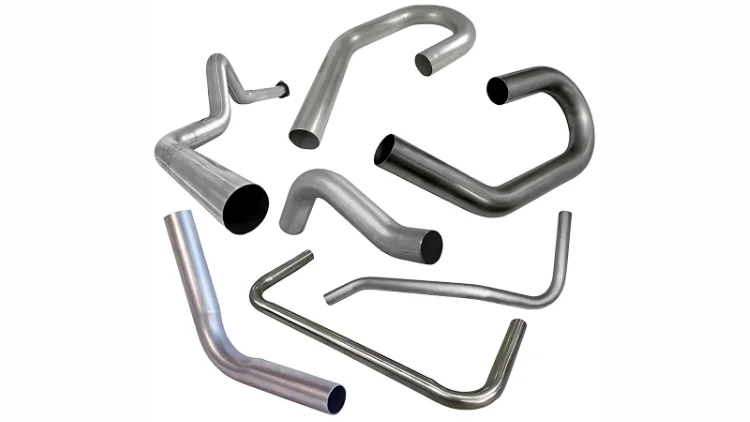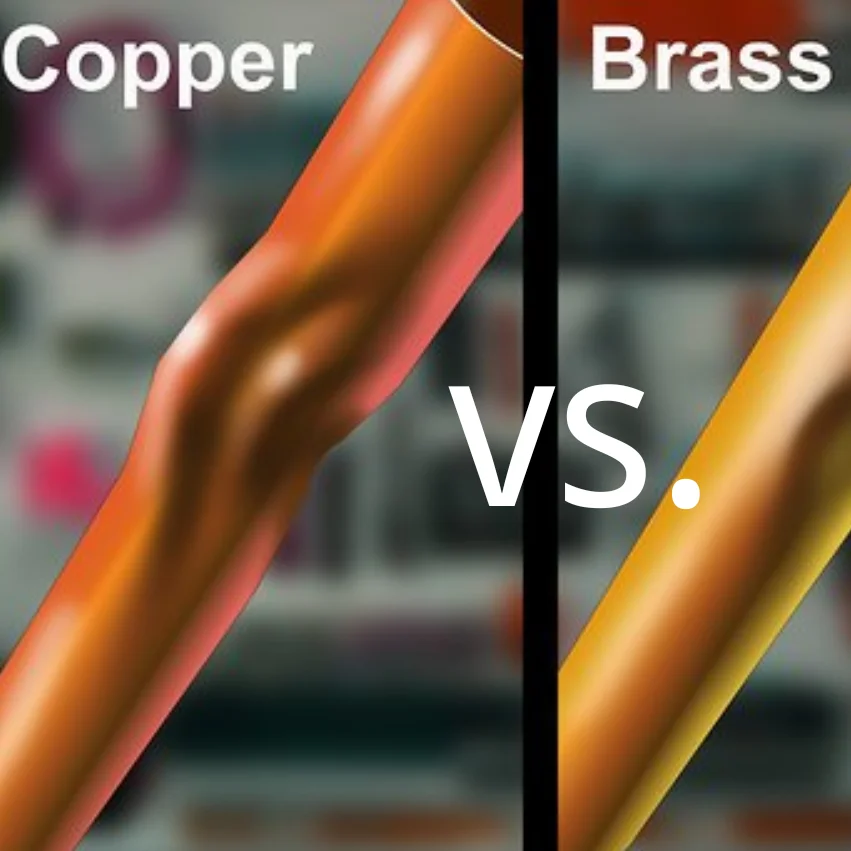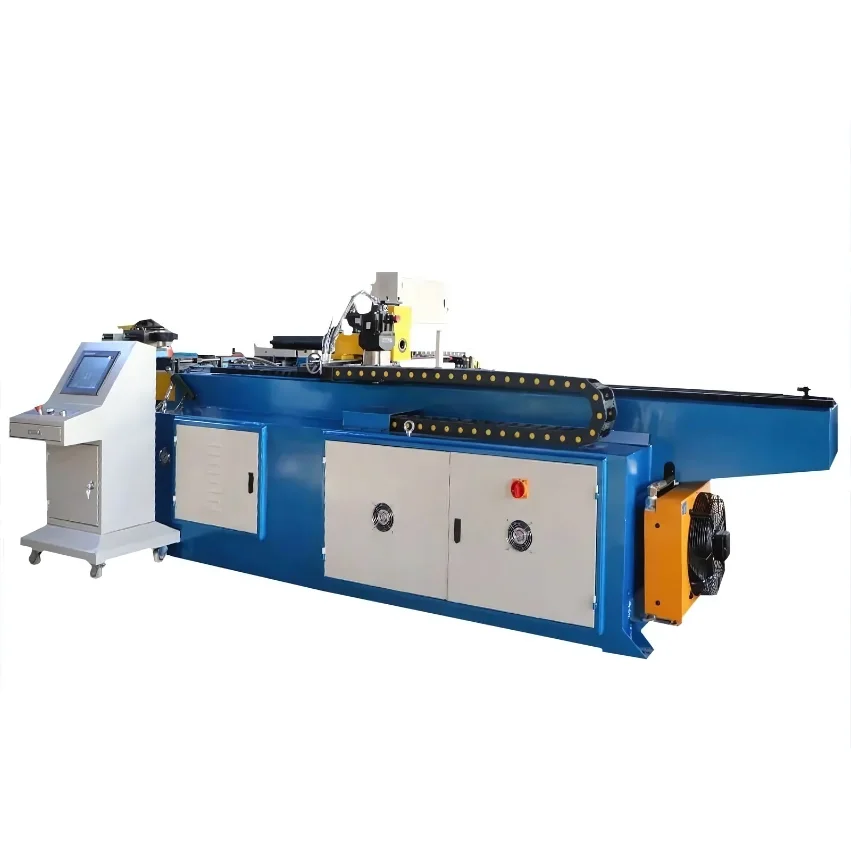Tube bending is a manufacturing process used to shape metal tubes into specific angles and curves. Have you ever noticed the smooth curves of metal pipe fittings on your car or pipeline and wondered how they are made? In this process, specialized machines actively bend the tubing, maintaining the structural integrity of the tubing without compromise.
Read on, this article contains the information you want to know about tube bending.
Here is what you will learn:
- What is Tube Bending
- What Is The Purpose Of Tube Bending?
- Commonly used Materials for Tube Bending
- Tube Bending Process Steps
- What are the Different Types of Tube Bending Methods?
- What Type of Equipment is Needed for Tube Bending?
- Industries Using Tube Bending
Read more: how to bend sheet metal
What is Tube Bending?
Tube bending is a metal forming process used to permanently shape pipes or tubes into specific angles and curves. This process involves applying force to the tube so that it can bend around the forming die without affecting the cross-sectional area of the tube.
In addition, there is no fixed method for bending a tube; various techniques can achieve this. Each method has its own characteristics.

What Is The Purpose Of Tube Bending?
The main purpose of pipe bending is to shape the pipe into a shape that suits various structural and functional requirements, thereby replacing accessories that are more likely to weaken various structures.
Compared with other metal components, pipes have higher structural integrity. However, straight pipes are rarely used, and generally need to be bent or formed at various angles.
In addition, compared with processes such as cutting or welding pipes, the structural integrity of the pipe may deteriorate, so pipe bending is the best choice.
Commonly Used Materials for Tube Bending
The most common materials used in pipe bending include stainless steel, aluminum, titanium, and brass. However, the amount of each material used varies. Here is a list of some of the most common materials:
Stainless Steel
Stainless steel exhibits high strength, high toughness, and excellent corrosion resistance. It also offers good formability and weldability, maintains hygiene, and cleans easily. It can maintain structural integrity in harsh environmental conditions. In addition, it can withstand frequent washing without deterioration. Therefore, stainless steel is an ideal material for bending tubes.
- 304 Stainless Steel: Known for its excellent corrosion resistance and formability. Commonly used in food processing and kitchen equipment.
- 316 Stainless Steel: Contains molybdenum, which increases corrosion resistance, especially against chlorides and other industrial solvents. Ideal for marine and chemical applications.
- 321 Stainless Steel: Stabilized with titanium, offering improved resistance to intergranular corrosion. Used in high-temperature environments.
The common types of stainless steel are:
- Austenitic Stainless Steel: The most commonly used type. Includes grades 304 and 316. It is non-magnetic and has high corrosion resistance.
- Ferritic Stainless Steel: Magnetic and moderately corrosion resistant. Less ductile than austenitic stainless steel.
- Martensitic Stainless Steel: Magnetic and heat treatable. It has high strength and wear resistance.
Aluminum
Aluminum is characterized by lightweight and easy bendability. Therefore, this material is easier to bend, and form, and reduces manufacturing costs. Therefore, aluminum is one of the most commonly used materials for manufacturing metal tubes.
Common grades of aluminum include 6061, which is known for its good mechanical properties and weldability, and 6063, which has excellent corrosion resistance and surface finish.
It has a density of about 2.7 grams per cubic centimeter, about one-third that of steel, making it lightweight.
The tensile strength of aluminum alloys ranges from 70 MPa for 1100 alloy to 700 MPa for 7075 alloy, depending on the alloy and temper.
A naturally occurring protective oxide layer enhances the corrosion resistance of aluminum.
In addition, aluminum has excellent thermal and electrical conductivity and is recyclable, making it an environmentally friendly choice.
Titanium
The biggest advantage of titanium lies in its excellent corrosion resistance, allowing it to withstand many extreme environments for extended periods without suffering damage. In addition, titanium also has an extremely high strength-to-weight ratio, making titanium popular in aerospace applications.
Common grades include Grade 2 (commercially pure titanium) and Grade 5 (Ti-6Al-4V).
Titanium is approximately 4.5 grams per cubic centimeter, which is about 60% of the density of steel, making it lightweight. It is heavier than aluminum.
The tensile strength of titanium alloys ranges from 240 MPa for commercially pure titanium to 1100 MPa for some titanium alloys.
Titanium is highly resistant to corrosion in a variety of corrosive environments including seawater, acids and industrial chemicals. It is also non-toxic and biocompatible, making it ideal for medical implants and devices.
Brass
Brass is an alloy of copper and zinc, with different proportions of zinc producing different types of brass. It often used in various hardware applications. Because brass tubes are easy to polish and can achieve a high gloss.
Common types include C360 (free machining brass) and C260 (barrel brass). It has a density of about 8.4 grams per cubic centimeter, which is higher than that of aluminum and titanium.
The tensile strength of brass varies from 250 MPa to 500 MPa, depending on the specific alloy and treatment.
Brass is corrosion resistant, especially to water and mild chemicals, making it suitable for plumbing and marine applications. Good electrical conductivity makes it suitable for electrical components.
Carbon Steel
Carbon steel is also a metal material that is easy to weld and bend. In addition, it has particularly good toughness and can be used in structures that need to withstand greater mechanical stress.
Tube Bending Process Steps
The following 5 steps are the steps of the pipe bending process:
Step 1: Prepare the tools
Before processing, you need to prepare the tools needed for bending. Then select the tube bending machine and other materials that are suitable for your project requirements, such as: molds, and dies. If necessary, you can measure and calculate the tools, such as: wall thickness, outer diameter.
Step 2: Set up the tube bending machine
Once the appropriate tube bending machine and tools are selected, the tube bending machine needs to be set up. The selected molds, dies and other tools are properly installed on the tube bending machine. Then adjust the equipment parameters, including: bending angle, speed and pressure, to ensure that they meet the processing requirements.
It should be noted that before officially starting to bend the tube, a trial bend should be made to ensure that the settings are correct.
Step 3: Align the tube
Tube alignment is an important part of ensuring the accuracy of the tube bending, especially the bending starting point and the predetermined bending path of the tube. Usually, the tube bending machine is equipped with a protractor to measure the bending angle. If your tube bending machine does not have a protractor, you can mark the reference points on paper for tracking.
Step 4: Bend the tube
Bending the tube is one of the core steps in the tube bending process. Because, when the technician starts the tube bender, the tube bender will apply pressure to push the tube toward the die, allowing it to bend around the mandrel. The mandrel supports the inner wall of the tube during the bending process, preventing kinking or collapse, especially in tubes with thin walls or small bend radii.
Step 5: Check and Adjust
After the initial bend, the angle and overall shape of the tube need to be checked according to the project specifications. If necessary, the bending process needs to be repeated with slight modifications to the tube bender parameters or the position of the tube.
What are the Different Types of Tube Bending Methods?
Tube bending is a versatile process that uses different methods to achieve the shapes and sizes required for a variety of applications. Here is a brief overview of the 6 different types of tube bending methods:
Rotary Stretch Bending
Rotary Stretch Bending is the most widely used tube bending process. In this process, the operator clamps the tube with a rotating stretcher, then pulls the tube onto a die and rotates the tube around the die.
Mandrel Bending
In mandrel bending, a mandrel is inserted into the tube to support the inner wall during the bending process. This prevents the tube from collapsing.
Press Bending
In press bending, the tube is simply pressed between two dies to form the bend. This is a simpler and more direct method.
Roll Bending
This method involves passing the tube through a series of rollers that gradually bend the metal. This method is ideal for forming large bends.
Compression Bending
In this process, the tube is placed between two dies and pressure is applied to the desired bend.
Induction Bending
Bending can be precisely controlled by applying electromagnetic induction heating to specific areas of the tube. The heat makes the tube more flexible at the bend, and pressure then shapes it.
What Type of Equipment is Needed for Tube Bending?
Before you start bending, you need to prepare the following equipment:
Bending Machines
There are many types of bending machines, including manual, hydraulic, and CNC (computer numerical control) bending machines. CNC bending machines allow for high precision and automation, as well as complex bends and multiple bend angles.

Mandrels
A mandrel, inserted into the tube during the bending process, primarily supports the inner wall of the tube to prevent collapse, especially when making bends with a small radius. The mandrel is key to ensuring the integrity of the cross-sectional area of the tube.
Bending Dies
The tube bending process has a series of dies, including bending dies, pressure dies, and clamping dies. Clamping dies are specifically used to fix the tube and then pressurize the tube to bend it into shape. Bending dies fix the tube and apply pressure around the shape of the die to deform the tube according to the specific bending radius and angle of the die.
Clamps and Press Dies
In the process of bending, clamps are needed to fix the tube in place to prevent slippage or misalignment. In addition, press dies help apply the necessary force to push the tube into the bending die.
Scraper Dies
During the bending process, the scraper die wipes the inner radius of the pipe to prevent wrinkling or deformation. It is particularly useful for achieving clean, smooth bends.
Measuring and Inspection Tools
In the pipe bending process, accurate measurement is very important to ensure that each bend meets the required dimensions. For example, tools such as calipers, angle gauges, and inspection gauges can help confirm the accuracy of each elbow.
Industries Using Tube Bending
Tube bending is a widely used process and a mainstay in many industries. Here are some common industries:
- Automotive. Manufacturers in the automotive industry often use tube bending to form components such as exhaust systems, brake lines, and fuel lines.
- Aerospace. In the aerospace industry, manufacturers use tube bending to create fuselages, engine components, and hydraulic systems.
- Medical. In the medical industry, manufacturers use tube bending to create medical devices such as wheelchairs, walkers, and hospital bed frames.
- Shipbuilding. In the shipbuilding industry, tube bending plays an important role. Tube bending allows complex piping systems, such as cooling, fuel, and hydraulic systems, to fit precisely into the tight spaces of a ship.
- Furniture manufacturing. The furniture industry also popularly uses tube bending to create frames for chairs, tables, and other pieces of furniture.
Summary
Tube bending is a versatile metal forming process that uses various methods such as rotary drawing, mandrel and press bending to shape tubes into specific angles and curves to meet different structural and functional requirements.
If you are looking for tube bending services, you can contact us now to get a quote for your project. We provide you with a variety of processing services, including tube bending, CNC milling and other value-added services.




